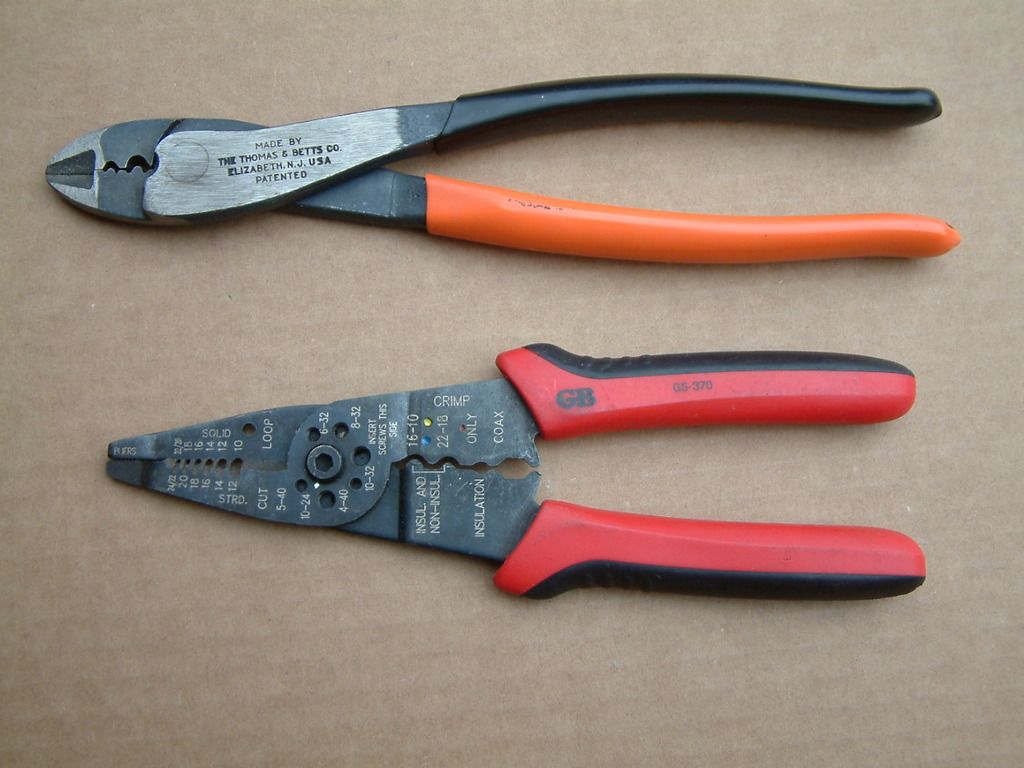There's often chatter here on the forum about electrical issues. I thought I'd make a post on this rainy morning about doing it right.
I was trained as an avionics technician years ago and I've done a lot of that work throughout my career. I'm even NASA trained in soldering. When it comes to electrical assembly, aviation tools are prohibitively expensive. So much so that I've owned very few of my own. Due to my experience, I've made incorrect assumptions about what's available to the do-it-yourselfer. I've been going about it like most of the rest of you.
At XS Southeast 2014, my bike failed to start for the Saturday morning ride, due to no spark. During troubleshooting, I tugged on a wire at the fuse box and it pulled right out of the flag terminal due to improper crimp technique. I decided to research the problem and find a simple solution.
I found a flag terminal crimper.


When you get your new fuse box from TC, he is kind enough to provide you with blue flag terminals. You need four of them. The remaining smaller gauge wires require the red flag terminals.
What I found for the job was a crimper frame from Pro's Kit. I bought one like this.

The nice part about this tool is that it will probably satisfy most of my crimping needs. You simply buy the dies for the task you need to perform.

for insulated flag terminals as in TC's fuse box

for butt splices and terminals

for open barrel contacts used on XS1100 connectors

for uninsulated butt splices and terminals
Pro's Kit has 35 die options. Sometimes space is a problem and another tool is required. I have one like this.

Home Depot or your local hardware store has this one.
A proper wire stripper looks like this.

When used correctly, this tool won't nick or cut wire strands.
Anyway, this stuff doesn't cost near as much as I thought it would. Do it once. Do it right.
Here's a helpful video I found on the subject. It's a far better explanation than I can make.
How to splice and repair wires, splicing techniques
I was trained as an avionics technician years ago and I've done a lot of that work throughout my career. I'm even NASA trained in soldering. When it comes to electrical assembly, aviation tools are prohibitively expensive. So much so that I've owned very few of my own. Due to my experience, I've made incorrect assumptions about what's available to the do-it-yourselfer. I've been going about it like most of the rest of you.
At XS Southeast 2014, my bike failed to start for the Saturday morning ride, due to no spark. During troubleshooting, I tugged on a wire at the fuse box and it pulled right out of the flag terminal due to improper crimp technique. I decided to research the problem and find a simple solution.
I found a flag terminal crimper.

When you get your new fuse box from TC, he is kind enough to provide you with blue flag terminals. You need four of them. The remaining smaller gauge wires require the red flag terminals.
What I found for the job was a crimper frame from Pro's Kit. I bought one like this.

The nice part about this tool is that it will probably satisfy most of my crimping needs. You simply buy the dies for the task you need to perform.

for insulated flag terminals as in TC's fuse box

for butt splices and terminals

for open barrel contacts used on XS1100 connectors

for uninsulated butt splices and terminals
Pro's Kit has 35 die options. Sometimes space is a problem and another tool is required. I have one like this.

Home Depot or your local hardware store has this one.
A proper wire stripper looks like this.

When used correctly, this tool won't nick or cut wire strands.
Anyway, this stuff doesn't cost near as much as I thought it would. Do it once. Do it right.
Here's a helpful video I found on the subject. It's a far better explanation than I can make.
How to splice and repair wires, splicing techniques
 . I tried to get Jeff to award you with a "Towelie" award for Least Likely to Lead a Group Out of the Iron Horse On Schedule...but you fixed it and reclaimed Leader of the Pack status, right on!!
. I tried to get Jeff to award you with a "Towelie" award for Least Likely to Lead a Group Out of the Iron Horse On Schedule...but you fixed it and reclaimed Leader of the Pack status, right on!!


 .
.


Comment